Allen Tiller's Blog, page 24
October 29, 2019
J.P. McGowan: “The Railroad Man”
J.P. McGowan: “The Railroad Man”
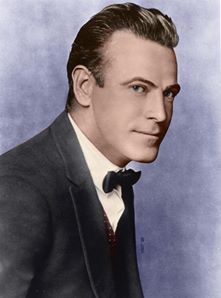
John Paterson McGowan was a South Australian born pioneer in Hollywood. Born in Terowie, South Australia, John was known professionally as J.P McGowan and acted in over 235 movies. He also directed 257 movies, wrote 31 movies and produced with his company, ‘Signal Film’ 22 movies.
McGowan is the only Australian life member of the Screen Directors Guild.
McGowan was born on February 24, 1880, in the mid-north town of Terowie. His father worked on the trains there, but the family soon moved south to Islington to the railyards where his father worked as a locomotive fire-stoker and labourer.
McGowan fought in South Africa during the Boer War, and from here was plucked to work in films in America. His first film appearance was in a 1910 silent movie called ‘A Lad From Old Ireland’. McGowan worked for Kalem Studios at this time and went on to star in and direct 33 episodes of the serial adventure movies series ‘The Hazards of Helen’. McGowan married Helen Holmes, and together they started their own production company ‘Signal
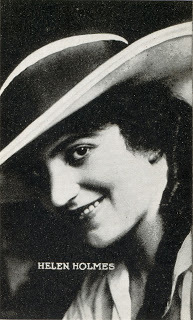 Films’. They had one child together before their relationship fizzled out. They divorced in 1925. In his later career, McGowan directed John Wayne in The Hurricane Express, a 12-movie series produced by Mascot Pictures.
Films’. They had one child together before their relationship fizzled out. They divorced in 1925. In his later career, McGowan directed John Wayne in The Hurricane Express, a 12-movie series produced by Mascot Pictures.McGowan served as the executive secretary to the Screen Directors Guild from 1938 until 1951 (known later as the Directors Guild of America).
McGowan suffered from heart disease in his later years. He died on 26 March 1952, Hollywood, Los Angeles, California, United States. His ashes were interred in a niche at Forest Lawn Memorial Park, California.
J.P. McGowan impressive resume on IMDB; Researched and written by Allen Tiller © 2019
Bibliography
Donaldson, D., ‘The First Australian in Hollywood’, NFSA (2019), https://www.nfsa.gov.au/latest/first-australian-hollywood
Jaunay, G., JP (John Paterson) McGowan, (2019), http://www.jaunay.com/mcgowan.html
Worden, L., ‘J.P. McGowan, SCV Film Pioneer’(2013), https://scvhistory.com/scvhistory/lw2355.htm
Published on October 29, 2019 02:00
October 22, 2019
The Haunts of Adelaide is 7 Years Old Today!
The Haunts of Adelaide is 7 Years Old Today!
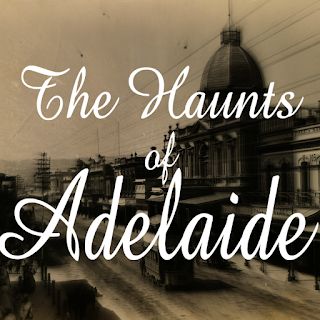
Today, the 22nd of October 2019, marks 7 years since I began writing this blog. So to mark the occasion today, I am going to link back to the seven most popular blog posts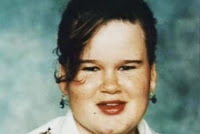
1. Muzyk Murder - Unfortunately the most read blog post on The Haunts of Adelaide is the story of the horrific murder of Tracy Muzyk in 1996.
http://hauntedadelaide.blogspot.com/2016/07/muzyk-murder.html
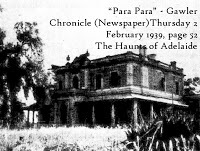
2. Para Para House - the second most popular blog post is a story of a mansion in Gawler West:http://hauntedadelaide.blogspot.com/2013/02/para-para-ghosts-of-gawler-part-6.html
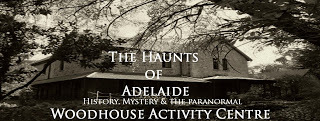
3. Woodhouse Activity Centre is the third most read blog post on The Haunts of Adelaide. While the story is brief in this post, a future post or possible book story will go into greater detail about the alleged ghosts
http://hauntedadelaide.blogspot.com/2014/03/woodhouse-activity-centre.html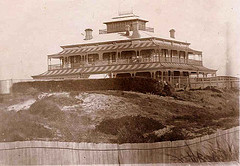
4. A former convalescent home for children at Grange is the 4th most popular Blog. Estcourt House was built in 1883 and used as a hospital, today it is a private home.
http://hauntedadelaide.blogspot.com/2013/06/estcourt-house.html
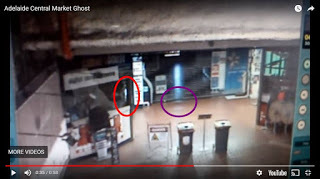
5. The Adelaide Central Markets make it into 5th spot with a ghost story about a security guard who claimed to witness strange goings-on in the Adelaide icon.
http://hauntedadelaide.blogspot.com/2018/03/a-ghost-in-adelaide-central-markets.html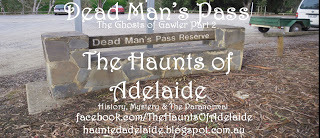
6. In the 6th spot, we have a hometown haunt: Dead Man's Pass at Gawler. I grew up playing in this reserve as a child and know its stories, its nooks and crannies, and still to this day enjoy exploring this location.
http://hauntedadelaide.blogspot.com/2013/01/dead-mans-pass-ghosts-of-gawler-part-two.html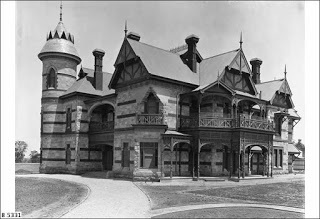
7. The seventh most read blog post is "Sinister by Design: Part 2: Carclew House". Since writing this post way back in 2012, I have visited Carclew many times and learned a great deal more about its history and alleged hauntings! look for new stories in future publications
http://hauntedadelaide.blogspot.com/2012/10/carclew-house-montefiore-hill-sinister.html
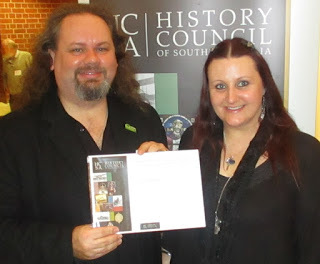 A big thank you to each and every one of you that has taken the time to read, share or interact with this blog. I enjoy researching history, I enjoy telling stories, and I started writing this blog purely for my own interest, so its a blessing for me that so many people have come to read this blog.
A big thank you to each and every one of you that has taken the time to read, share or interact with this blog. I enjoy researching history, I enjoy telling stories, and I started writing this blog purely for my own interest, so its a blessing for me that so many people have come to read this blog.
Allen Tiller

Today, the 22nd of October 2019, marks 7 years since I began writing this blog. So to mark the occasion today, I am going to link back to the seven most popular blog posts

1. Muzyk Murder - Unfortunately the most read blog post on The Haunts of Adelaide is the story of the horrific murder of Tracy Muzyk in 1996.
http://hauntedadelaide.blogspot.com/2016/07/muzyk-murder.html

2. Para Para House - the second most popular blog post is a story of a mansion in Gawler West:http://hauntedadelaide.blogspot.com/2013/02/para-para-ghosts-of-gawler-part-6.html

3. Woodhouse Activity Centre is the third most read blog post on The Haunts of Adelaide. While the story is brief in this post, a future post or possible book story will go into greater detail about the alleged ghosts
http://hauntedadelaide.blogspot.com/2014/03/woodhouse-activity-centre.html

4. A former convalescent home for children at Grange is the 4th most popular Blog. Estcourt House was built in 1883 and used as a hospital, today it is a private home.
http://hauntedadelaide.blogspot.com/2013/06/estcourt-house.html

5. The Adelaide Central Markets make it into 5th spot with a ghost story about a security guard who claimed to witness strange goings-on in the Adelaide icon.
http://hauntedadelaide.blogspot.com/2018/03/a-ghost-in-adelaide-central-markets.html

6. In the 6th spot, we have a hometown haunt: Dead Man's Pass at Gawler. I grew up playing in this reserve as a child and know its stories, its nooks and crannies, and still to this day enjoy exploring this location.
http://hauntedadelaide.blogspot.com/2013/01/dead-mans-pass-ghosts-of-gawler-part-two.html

7. The seventh most read blog post is "Sinister by Design: Part 2: Carclew House". Since writing this post way back in 2012, I have visited Carclew many times and learned a great deal more about its history and alleged hauntings! look for new stories in future publications
http://hauntedadelaide.blogspot.com/2012/10/carclew-house-montefiore-hill-sinister.html
 A big thank you to each and every one of you that has taken the time to read, share or interact with this blog. I enjoy researching history, I enjoy telling stories, and I started writing this blog purely for my own interest, so its a blessing for me that so many people have come to read this blog.
A big thank you to each and every one of you that has taken the time to read, share or interact with this blog. I enjoy researching history, I enjoy telling stories, and I started writing this blog purely for my own interest, so its a blessing for me that so many people have come to read this blog.Allen Tiller
Published on October 22, 2019 02:00
October 14, 2019
A Ghost at Nairne
A Ghost at Nairne
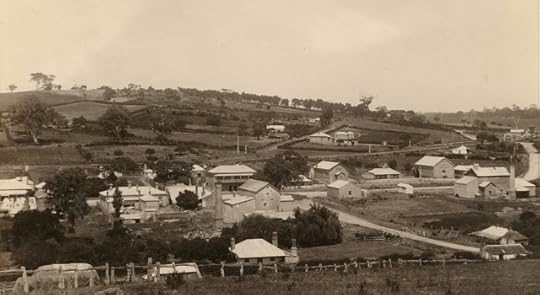 Nairne 1910 - SLSA: [B 394]In March 1878, the Adelaide Hills town of Nairne was beset with an unruly and persistent ghost who over several nights was terrifying local ladies. The ghost would appear in the evenings at various locations around the town surprising locals, before vanishing into the night.
Nairne 1910 - SLSA: [B 394]In March 1878, the Adelaide Hills town of Nairne was beset with an unruly and persistent ghost who over several nights was terrifying local ladies. The ghost would appear in the evenings at various locations around the town surprising locals, before vanishing into the night.One evening a group of young men set about capturing the ghost. They waited patiently for it to appear. When it did appear, the ghost seemed to be very much aware of the plans for its capture, evading the various traps put in place. The ghost was also very fast, outpacing the living. It vanished once more into the night.
A warning was put around the town that if the ghost was captured, a harsh and severe punishment would be dealt to it. The ghost was not seen around Nairne again after the warning.
Researched and written by Allen Tiller © 2019
Bibliography
'COUNTRY LETTERS.', Adelaide Observer, (16 March 1878), p. 6. 'COUNTRY CORRESPONDENCE.', South Australian Register, (14 March 1878), p. 6. 'NAIRNE, MARCH 13.', South Australian Chronicle and Weekly Mail, (16 March 1878), p. 4
Published on October 14, 2019 18:45
October 8, 2019
7 Minutes to 3: The Tragic Deaths of Roy Ayling and Eugenie Armstrong
7 Minutes to 3: The Tragic Deaths of Roy Ayling and Eugenie Armstrong.

June 19th, 1919 was just another ordinary day for engine driver and fireman, John James O’Shea and Harold Sutherland. They went to work at the Islington Train Yards. They fired up Engine 88 to pull Goods Train 72 and set off on route from Mile End out to Hamley Bridge, north of Gawler.
The train passed through Gawler and out onto the Roseworthy line to Hamley Bridge, then back through Roseworthy heading toward Gawler.
As the train approached the crossing on what is now Redbanks Road between Roseworthy and Gawler, the engine driver sounded his whistle. As the whistle was sounded, he noticed a motorcycle with sidecar speeding along the road. The train whistle was sounded again as a warning. The motorcycle appeared to slow down, then suddenly as if racing the train to the crossing, sped up.
O’Shea sounded the train's whistle again and Sutherland applied the tender brake. Due to the incline of the rail line, the airbrakes and tender brakes had already been partially applied, so when the train approached the crossing it was already decelerating.
The train entered the crossing at 20 miles per hour pulling a 300-ton load. It struck the centre of the motorcycle, dragging it under the cowcatcher and under the train. Fireman, Harold Sutherland stated of the incident; “I saw the motorcycle, about a chain away, on the driver's side of the engine. Saw nothing further until the bodies flew out from the under wheels of the engine onto the right side of the line.”
There were many witnesses to the accident. Farmers on properties around the train line had been out in the fields working had seen the whole event as it occurred. Farmer Hugo Twartz, Martin Twartz, Theodore Bartsch, all gave testimony that confirmed the train driver and train fireman’s testimony.
Roy Ayling was a quiet young man described as quiet and thoughtful, with a gift for motor mechanics. The 20-year-old was well known and liked around Willaston. He was a successful poultry breeder who made his own incubators and breeders. He had been riding a motorcycle for over a year, and many local people knew the sound of his bike as it came and went from Willaston.
Eugenie Armstrong was a student at the Gawler Technical School. At only 18 and half she had made her mark assisting at various businesses in Gawler’s main street. She was a valued member of the Gawler’s Congregational Church. Her father, Mr A.P, Armstrong was a well-known Labor Party Member in South Australia. Miss Armstrong was described by friends as; “A sterling and reliable companion, who was very popular among her peers.”
On June 19th, Roy picked up Eugenie in his sidecar. He had only had the bike for two months and enjoyed showing it off. They headed out toward Roseworthy to catch a late afternoon football match between the Willaston Football Club and the Roseworthy College students’ team.
It’s not known exactly what happened on that fateful day. The par sped along Redbank’s road toward the crossing, the train blew its whistle, and Roy slowed down but didn’t stop. He sped up, the train blew a second, longer warning whistle, but Roy didn’t stop, he pushed ahead to the crossing, where the bike was hit, and two young adults were flung from the bike under the train.
Was Roy overconfident his new bike could beat the train? Was he showing off to Eugenie, or perhaps trying to scare her? Or was he distracted by the young woman in the sidecar, not noticing the noise of the trains whistle over the blare of his bike?
We will never truly know the exact circumstances of the accident that claimed their lives… The police attended the scene after the accident. The young adults’ bodies were badly mutilated, so much so that they were buried before their funerals were held.
At the scene, Miss Armstrong’s watch was picked up by Sergeant Adamson. It read 7 minutes to 3, about the time of the accident.
Roy and Eugenie are buried at the historic Willaston Cemetery near Gawler.
Researched and written by Allen Tiller © 2019.
Bibliography
'AWFUL RAILWAY ACCIDENT.', Bunyip, (27 June 1919), p. 3.
'THE INQUEST.', Bunyip, (27 June 1919), p. 3.
'DETAILS OF THE TRAGEDY.', Chronicle, (28 June 1919), p. 13.
'RUN DOWN BY A TRAIN.', Chronicle, (28 June 1919), p. 13.
Published on October 08, 2019 02:00
October 1, 2019
Buried Alive at Mount Gambier
Buried Alive at Mount Gambier
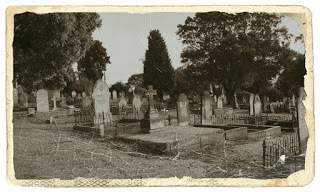
Richard Unwin was a sexton and gravedigger at Mount Gambier cemetery. On 26 October 1893, Unwin set about digging a grave, there was no machinery to dig the graves, so it was all done by pick and shovel. Unwin on this day was digging a particularly deep grave between two burial enclosures had nearly completed his work, having reached a depth of 8 feet, when the sides of the grave collapsed, burying him up to his neck.
Unwin was trapped, and unable to move. He tried in vain to move his body, but the weight of the dirt was too much. His head was exposed, but he was below the ground line by a good two feet, so could not be seen by people passing by, unless they actually looked inside the grave.
Unwin called out, but the weight of the dirt on his chest made it hard to do so, but he persevered in the hope someone might hear him.
In another part of the cemetery, Mr Kelly and Mr Topham were also at work. Mr Kelly thought he heard some odd noises travelling on the wind and went to investigate them. He followed the moans and groans and soon discovered Unwin buried to the neck in someone else’s grave.
Kelly called Topham over and the two men worked with great urgency to free Unwin. An adjoining monument was threatening to collapse into the hole onto Unwin after the dirt had shifted trapping Unwin.
Two men passing by, Mr Lewis and Mr Driscoll noticed the commotion and ran into the cemetery to offer his assistance. Mr Topham was sent into town to retrieve some brandy for Unwin to relieve his exhaustion.
Another passer-by Mr Eustace also offered to help.
While the men were digging to free Unwin, the ground caved in a few times, further destabilising the already precarious position of the nearby monument.
Unwin indicated to the men that one of his legs was seriously injured as it had begun to burn. A local doctor was sent for.
After an hour and a half of digging, Unwin was finally freed from the grave, he was exhausted and had suffered a broken right leg.
It was many weeks before Unwin returned to work.
Researched and written by Allen Tiller © 2019
Bibliography
'A MAN BURIED ALIVE.', South Australian Chronicle, (28 October 1893), p. 21.
'A GRAVEDIGGER BURIED.', South Australian Register, (27 October 1893), p. 5.
'A GRAVEDIGGER BURIED.', Evening Journal, (27 October 1893), p. 3
'The Border Watch,', Border Watch, (28 October 1893), p. 2.
Published on October 01, 2019 03:00
September 23, 2019
The Sea Captain’s Ghost – Anchorage Hotel, Victor Harbor
The Sea Captain’s Ghost – Anchorage Hotel, Victor Harbor
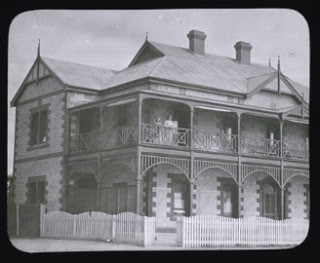 Warringa Guest House, Victor Harbor 1920: SLSA: [PRG 1316/12/207] Victor Harbor’s Anchorage Hotel is said to be one of the most haunted buildings in the seaside town. It is rumoured to be haunted by an old Sea Captain who haunts an upstairs bedroom. Visitors report the room smelling of cigar smoke, and in the morning find a pile of sand at the foot of the bed.
Warringa Guest House, Victor Harbor 1920: SLSA: [PRG 1316/12/207] Victor Harbor’s Anchorage Hotel is said to be one of the most haunted buildings in the seaside town. It is rumoured to be haunted by an old Sea Captain who haunts an upstairs bedroom. Visitors report the room smelling of cigar smoke, and in the morning find a pile of sand at the foot of the bed.
Another spirit is said to be that of a little girl, the daughter of a former manager, who drowned nearby.
The hotel is also alleged to be haunted by an apparition who appears as a “blue light” that likes to play with electrical equipment. Staff also report impressions of bodies left on beds when no one has slept in them.
Three women in spirit have been seen on the ground floor. One described as being tall and slender wearing a dress with a high neckline. Another as a beautiful woman wearing a large sun hat and sunglasses, seen in the dining room. The third woman has been identified as a former maid who is still performing her duties today in the afterlife.
Perhaps the most disturbing haunting in this hotel is that of a young boy who it is alleged committed suicide in a cubicle in the ladies’ toilets. Since that time, women will instinctively not use that cubicle. There have also been reports of its door opening and slamming shut continuously of its own volition, even when there is no wind movement in the entire hotel. A smell of rotten meat also emanates from the toilets from time to time and moves through the hotel. On one occasion as this smell moved through the hotel, several electrical items suddenly broke down at once! The Anchorage Hotel was built by James Holliday in 1906, and originally opened as the Warringa Guest House. Extensions were added in 1912 and 1952.
Researched and written by Allen Tiller © 2019
BibliographyAnchorage Hotel, (2019),https://anchoragehotel.com.au/
 Warringa Guest House, Victor Harbor 1920: SLSA: [PRG 1316/12/207] Victor Harbor’s Anchorage Hotel is said to be one of the most haunted buildings in the seaside town. It is rumoured to be haunted by an old Sea Captain who haunts an upstairs bedroom. Visitors report the room smelling of cigar smoke, and in the morning find a pile of sand at the foot of the bed.
Warringa Guest House, Victor Harbor 1920: SLSA: [PRG 1316/12/207] Victor Harbor’s Anchorage Hotel is said to be one of the most haunted buildings in the seaside town. It is rumoured to be haunted by an old Sea Captain who haunts an upstairs bedroom. Visitors report the room smelling of cigar smoke, and in the morning find a pile of sand at the foot of the bed.Another spirit is said to be that of a little girl, the daughter of a former manager, who drowned nearby.
The hotel is also alleged to be haunted by an apparition who appears as a “blue light” that likes to play with electrical equipment. Staff also report impressions of bodies left on beds when no one has slept in them.
Three women in spirit have been seen on the ground floor. One described as being tall and slender wearing a dress with a high neckline. Another as a beautiful woman wearing a large sun hat and sunglasses, seen in the dining room. The third woman has been identified as a former maid who is still performing her duties today in the afterlife.
Perhaps the most disturbing haunting in this hotel is that of a young boy who it is alleged committed suicide in a cubicle in the ladies’ toilets. Since that time, women will instinctively not use that cubicle. There have also been reports of its door opening and slamming shut continuously of its own volition, even when there is no wind movement in the entire hotel. A smell of rotten meat also emanates from the toilets from time to time and moves through the hotel. On one occasion as this smell moved through the hotel, several electrical items suddenly broke down at once! The Anchorage Hotel was built by James Holliday in 1906, and originally opened as the Warringa Guest House. Extensions were added in 1912 and 1952.
Researched and written by Allen Tiller © 2019
BibliographyAnchorage Hotel, (2019),https://anchoragehotel.com.au/
Published on September 23, 2019 14:27
September 16, 2019
The Haunted Jens Hotel – Mount Gambier
The Haunted Jens Hotel – Mount Gambier
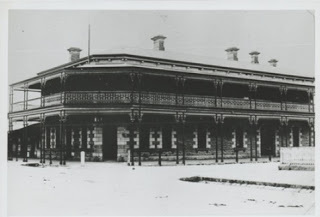 Jens Hotel - 1893 - SLSA: B21810Jens Hotel in Mount Gambier which was established in 1847. The hotel we see today is the completion of construction in 1884 for Johannes Jens.
Jens Hotel - 1893 - SLSA: B21810Jens Hotel in Mount Gambier which was established in 1847. The hotel we see today is the completion of construction in 1884 for Johannes Jens. It is alleged the ghost of a very large man named ‘Maurice’ haunts the Jens Hotel. It is believed Maurice died inside the hotel in 1905.
Maurice likes to play with electrical items in the hotel, and to protect women who are vulnerable to men trying to take advantage of them, by suddenly appearing to men and threatening them with his intense energy.
It is not known who Maurice actually is, but many people have died in the Jens Hotel.
In 1933, well-known local grazier Edgar Learmonth was found dead in an outhouse at the Jens Hotel. He had taken his own life by shooting himself in the temple with a small calibre revolver. An inquest later found him to be of unsound mind.
Another unfortunate death at the Jens Hotel was that of Mr H. Smith. Smith had been fishing when a hook had become stuck in his hand. The wound became infected, and gangrene set in. His blood became septic killing him suddenly while staying in the hotel.
Another alleged spirit in this hotel is a little girl. She is believed to be around 4 years old and is alleged to haunt the ground floor. It is believed she is waiting for her mother to return. The basement of this hotel is also alleged to be haunted by a man who committed suicide by hanging in this hotel.
Researched and written by Allen Tiller © 2019
Bibliography'Death of a Well-known Mount Gambier Grazier.', The Naracoorte Herald, (11 July 1933), p. 3.'OBITUARY.', Border Watch, (13 July 1933), p. 4.'The Tragic Death of Mr. E. T. Learmonth.', The Naracoorte Herald, (14 July 1933), p. 3. 'A PAINFUL CASE.', South Australian Weekly Chronicle, (7 March 1885), p. 21.
Published on September 16, 2019 15:43
September 12, 2019
Hotel of Haunted Dolls - OCT 2019
Hotel of Haunted Dolls
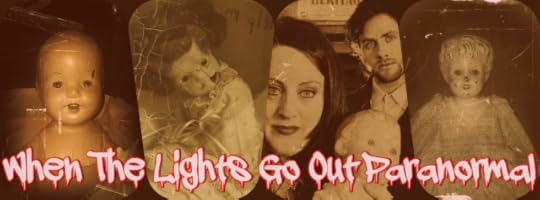
After a successful debut, “When the Lights Go Out Paranormal” returns with another “Hotel of Haunted Dolls” at the ‘Tea Tree Gully Heritage Museum’ Old Highercombe Hotel (3 Perseverance Rd, Tea Tree Gully SA 5091) on the
Saturday 26th Oct 2019 – 10 am until 9 pm
Sunday 27th Oct 2019 - 11 am until 4 pm
At Their first Haunted Dolls Museum, Karina Eames and James Larson flew in special guests, Evelyn and Kerry Walton, and their internationally famous haunted doll ‘Letta Me Out’
( https://www.facebook.com/Letta-me-out-630776097073363/) to accompany her haunted dolls collection. The first event saw over 1000 people attend this unique and terrifying event. With one-woman reporting being scratched by an unseen hand, and many others feeling spooked at this creepy-cool event! This time, Karina’s haunted dolls are the stars of the show for this Halloween Spooktacular event! Among the haunted dolls on display at this special event are three new haunted dolls; a new “Grave Doll” a “Minerva Tin Head Doll (1800's)” and ‘Tuppence’ a doll found in a basement in Moonta, which had been given a burial. When retrieved Tuppence new owner began to experience paranormal phenomena such as hearing a child giggle, toys left out in strange places, disembodied footsteps in a passageway…and he even witnessed a ghostly child’s figure…
When The Lights Go Out Paranormal: https://www.facebook.com/pg/whenthelightsgooutparanomal
CONTACT: whenthelightsgooutparanormal@gmail.com
 Karen Tiller, Evelyn Walton, Kerry Walton, Karina Eames, 'Letta Me Out' (on Karina's lap), James Larson, Allen Tiller
Karen Tiller, Evelyn Walton, Kerry Walton, Karina Eames, 'Letta Me Out' (on Karina's lap), James Larson, Allen Tillerfront: Bowdie-Jason Ciro Papagni at the first; "Hotel of Haunted Dolls"
Previous Media Releases: This Morning (ITV - UK TV) - https://www.youtube.com/watch?v=TCnxmFDbFiAThe Sun (UK Newspaper) - https://www.thesun.co.uk/tvandshowbiz/2851868/this-morning-sparks-hilarious-x-rated-reactions-from-viewers-to-woman-who-speaks-to-the-dead-through-her-700-creepy-dolls/Glam Adelaide: https://glamadelaide.com.au/todays-museum-of-haunted-dolls-at-old-adelaide-gaol-might-be-the-creepiest-event-weve-seen/Today Tonight Channel 7: https://7news.com.au/news/sa/creepy-collectibles-inside-australias-most-terrifying-doll-collection-c-367926What’s On In Adelaide: https://whatsoninadelaide.net.au/events/hotel-of-haunted-dolls/
Published on September 12, 2019 03:02
September 10, 2019
The Demise of Henry Samuel Augustus Von Unna
The Demise of Henry Samuel Augustus Von Unna
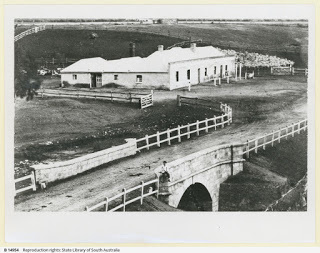 The Old Spot Hotel circa 1910. SLSA: B14954In 1859, Henry Samuel Augustus Von Unna was a German immigrant living in Angas Park with his wife and six children. He had earned a government position to look for water in the area between Port Lincoln and Port Augusta and had stopped into the Old Spot Hotel in Salisbury hotel a rest on his travels back to Angas Park.
The Old Spot Hotel circa 1910. SLSA: B14954In 1859, Henry Samuel Augustus Von Unna was a German immigrant living in Angas Park with his wife and six children. He had earned a government position to look for water in the area between Port Lincoln and Port Augusta and had stopped into the Old Spot Hotel in Salisbury hotel a rest on his travels back to Angas Park.The government department which had hired him had done a background check on Von Unna, and cancelled his contract due to a previous crime he had not disclosed. H was now without a job and very depressed. He had planned to move his wife and children from Angas Park to Kensington but was so upset that his past was now affecting his future, that he decided on a different outcome.
That night, before retiring to his room, Von Unna requested paper, pen and ink, and a nightcap of brandy and water.
He went to his room and locked the door and began writing.
A few hours later, other residents in the hotel were woken by a man shrieking “God Have Mercy!” and “Christ have mercy upon me!”. The noise was coming from Von Unna’s room, his door locked, the other residents smashed a window to gain entry. Inside they found Von Unna laying on the bed with only his shirt on, convulsing and writhing in pain.
Despite his condition, Von Unna was coherent enough that when asked what was wrong he replied that he had accidentally taken strychnine instead of calomel (a mercury-based solution used as a laxative), but shortly after, between gasping breathes, he admitted he had taken a large dose of strychnine to kill himself.
A Doctor was sent for, as was a Wesleyan Reverend requested by Von Unna. Remarkably, Von Unna, who had swallowed a very large dose of the poison managed to cling to life long enough to talk to the priest and tell him there were two letters which explained his predicament.
In one letter Von Unna offered a prayer for himself and his family, and one for his persecutors, of which he blamed for his act of suicide, and another prayer for his people, the Jewish.
The second letter contained a long-winded denunciation of society and all the injustices of crimes following, and ruining a man, long after he has paid for his crimes. Von Unna’s letters were held in police evidence after his death. During an inquest into the suicide of Von Unna, the jury declared at the conclusion: “the said Von Unna died from the effects of strychnine, administered by his own hand while labouring under extreme disappointments of a worldly nature.”
It is believed that Von Unna is one of the many spirits haunting the Old Spot Hotel at Salisbury.
Researched and written by Allen Tiller © 2019
Bibliography'EXTRAORDINARY CASE OF SUICIDE.', South Australian Weekly Chronicle, (19 November 1859), p. 2.
Published on September 10, 2019 03:00
September 3, 2019
A Haunting at the Tea Tree Gully Hotel
A Haunting at the Tea Tree Gully Hotel
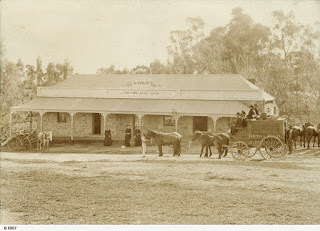 1884 -SLSA: B 8076
1884 -SLSA: B 8076
The Tea Tree Gully Hotel was the third hotel to open in the area. It opened in March 1854, and for a short time between 1937 until 1954, it was known as The Euston Hotel.
Originally the road through the area crossed the front of the Highercombe Hotel, and travellers would stop there for the night. This caused the Tea Tree Gully Hotel to be disadvantaged in money making opportunities, which led to the hotel having 14 owners in 20 years.
That all that changed when the road to Adelaide was diverted, and the Tea Tree Gully hotel gained the customer lodging by now facing the main road. This loss saw the Highercombe Hotel shut its doors due to poor patronage.
Underneath the Tea Tree Gully Hotel is the original living quarters of the hotel owners and staff. This is the area alleged to be most haunted with workers becoming paranoid they are being followed or watched.
Some staff have claimed to have had their names called out whilst locking up the hotel, with others claiming to smell sweet odours in areas that usually smell sour or ‘off’. There are claims of machines and televisions turning on and off by themselves, and loud, mysterious bangs heard throughout the hotel.
The most often seen ghost is that of a young girl dressed in white, which ties in with what Mr Gibblens of the Highercombe Hotel saw in their meeting room. The young girl has been seen in the bathroom of the Tea Tree gully lying on the floor sobbing. No-one is sure who she might have been, or why she haunts the hotelThe hotel is known today as The Gully Public House and Garden.
© 2019 Allen Tiller
Bibliography‘A Brief History’, Tea Tree Gully Hotel (2019), https://www.thegullyphg.com.au/a-brief-history‘A Short History’, Tea Tree Gully & District Historical Society, (2019), http://ttghistoricalsociety.org.au/history/history-of-ttg/
Published on September 03, 2019 03:00



